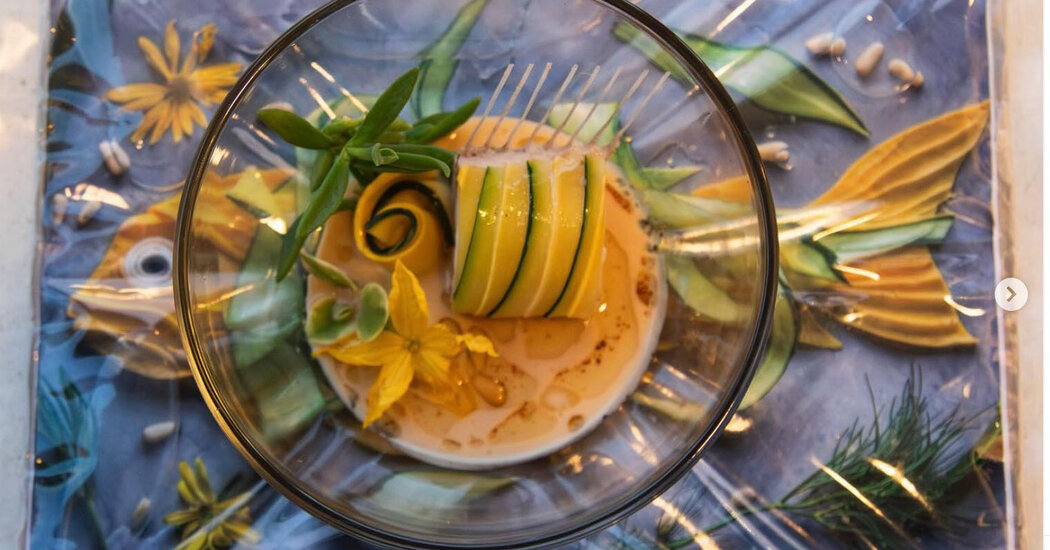
Some restaurateurs are starting to explore ways A.I. can help them create recipes, menus and dining experiences.
For four months in 2026, the Chicago restaurant Next will serve a nine-course menu with each course contributed by a different chef. One of them is a 33-year-old woman from Wisconsin who cooked under the pathbreaking modernist Ferran Adrià, the purist sushi master Jiro Ono and the great codifier and systematizer of French haute cuisine, Auguste Escoffier.
Her glittering résumé is all the more impressive when you recall that Escoffier has been dead since 1935.
Where did Grant Achatz, the chef and an owner of Next, find this prodigy? In conversations with ChatGPT, Mr. Achatz supplied the chatbot with this chef’s name, Jill, along with her work history and family background, all of which he invented. Then he asked it to suggest dishes that would reflect her personal and professional influences.
If all goes according to plan, he will keep prompting the program to refine one of Jill’s recipes, along with those of eight other imaginary chefs, for a menu almost entirely composed by artificial intelligence.
“I want it to do as much as possible, short of actually preparing it,” Mr. Achatz said.
As generative A.I. has grown more powerful and fluent over the past decade, many restaurants have adopted it for tracking inventory, scheduling shifts and other operational tasks. Chefs have not been anywhere near as quick to ask the bots’ help in dreaming up fresh ideas, even as visual artists, musicians, writers and other creative types have been busily collaborating with the technology.
We are having trouble retrieving the article content.
Please enable JavaScript in your browser settings.
Thank you for your patience while we verify access. If you are in Reader mode please exit and log into your Times account, or subscribe for all of The Times.
Thank you for your patience while we verify access.
Already a subscriber? Log in.
Want all of The Times? Subscribe.
